Stereum rameale (Pers.) Burt
Phylum: Basidiomycota - Class: Agaricomycetes - Order: Russulales - Family: Stereaceae
Distribution - Taxonomic History - Etymology - Identification - Culinary Notes - Reference Sources
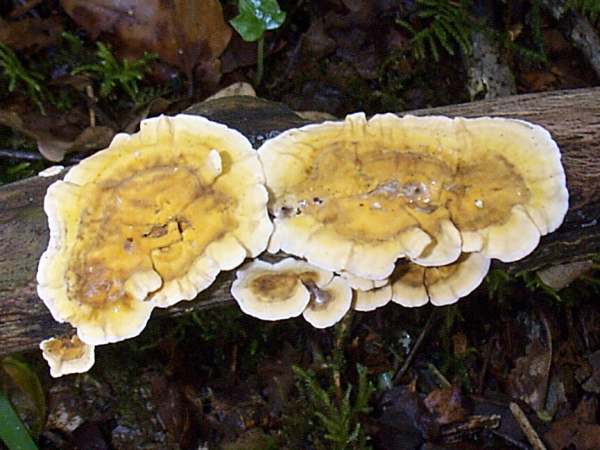
Distinguished from Stereum hirsutum because it lacks the hairs on its upper surface (although the edges of young crusts are fringed with tiny eyelash-like hairs) this very variable crust forms lines and sometimes tiers on dead twigs and small branches.The fruitbodies are thin, elastic and tough when moist, becoming hard and brittle when dry.
This crust persists all through the year but releases spores only during autumn. It favours Beech and other hardwoods.
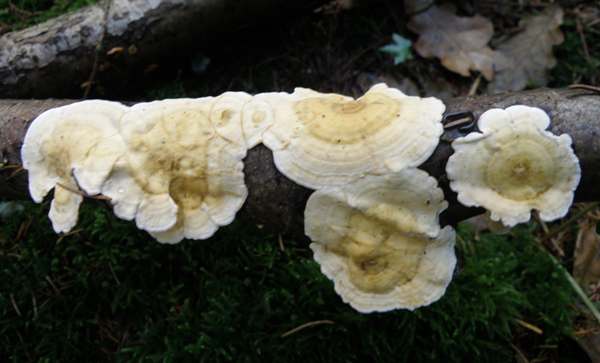
Distribution
Stereum rameale is common and widespread throughout Britain and Ireland. On mainland Europe this wood-rotting crust fungus is found from Scandinavia right down to the Mediterranean region, and its range extends eastwards into Asia's temperate regions too. In North America this crust fungus is very common; mycologists there generally list it under the synonym Stereum complicatum.
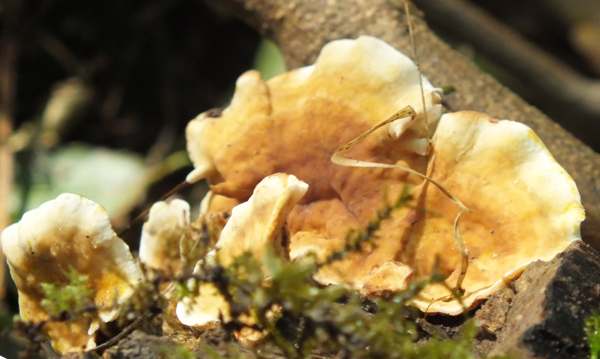
Taxonomic history
This crust fungus was described in 1801 by Christiaan Hendrik Persoon, who gave it the scientific name Thelephora hirsuta d ramealis.
In 1920 American mycologist Edward Angus Burt (1859 - 1939) transferred this species to the genus Stereum, and its scientific name, widely accepted today, became Stereum rameale.
Synonyms of Stereum rameale include Thelephora hirsuta d ramealis Pers., Stereum complicatum Hansen & Knudsen, Stereum ochraceoflavum, and Stereum sulphuratum.
Etymology
Stereum, the generic name, means tough, and crust fungi in this genus certainly can be difficult to tear when you want to take a small sample for investigation. The specific epithet rameale means refers to the fact that this crust fungus commonly appears on branches.
Identification guide
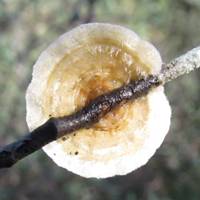 |
FruitbodyOccurring in patches typically 1 to 3cm across, often merging; edges may be detached and sometimes reflexed from substrate; fertile surface is smooth, ochraceous in the centre, paler towards the wavy margin; upper (when in bracket form). The specimen seen on the left was found on an oak twig in central Portugal.
|
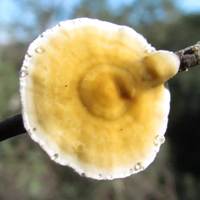 |
The lower spore-bearing surface is banded yellow-brown; it is downy but not hairy. |
SporesEllipsoidal to cylindrical, smooth, 7-9 x 2-3µm; amyloid. Spore printWhite. |
|
Odour/taste |
No noticeable odour; tough, tasteless and inedible . |
Habitat & Ecological role |
Saprobic, on dead hardwood trees and fallen branches, particularly Beech. |
Season |
All through the year, but shedding spores only in autumn. |
Similar species |
Stereum subtomentosum has an upper surface that is zoned in various shades of greyish-orange or greyish white; it usually forms reflexed crusts or brackets. Stereum hirsutum is hairy on its upper surface and often forms reflexed crusts or brackets. |
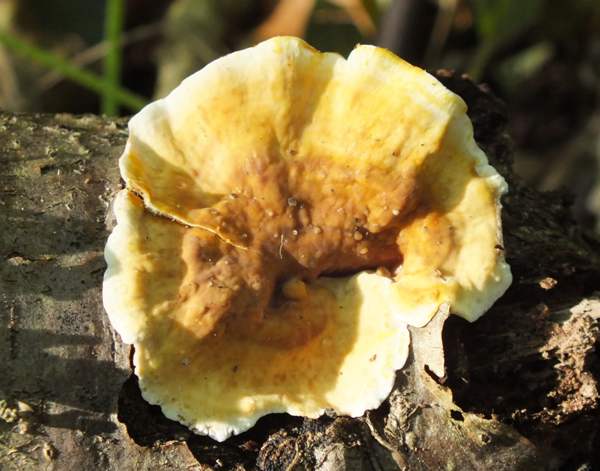
Culinary Notes
These tough and leathery, tasteless fungi are inedible and of no culinary value.
Reference Sources
Pat O'Reilly (2016). Fascinated by Fungi, First Nature Publishing.
Paul M. Kirk, Paul F. Cannon, David W. Minter and J. A. Stalpers. (2008). Dictionary of the Fungi; CABI.
Taxonomic history and synonym information on these pages is drawn from many sources but in particular from the British Mycological Society's GB Checklist of Fungi.
Fascinated by Fungi. Back by popular demand, Pat O'Reilly's best-selling 450-page hardback book is available now. The latest second edition was republished with a sparkling new cover design in September 2022 by Coch-y-Bonddu Books. Full details and copies are available from the publisher's online bookshop...

